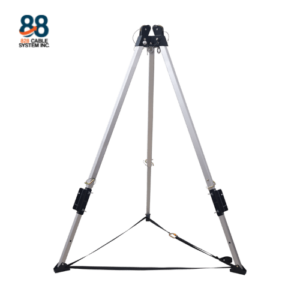Confined spaces, such as cargo holds, pressure vessels, tanks, and other restricted areas on cargo ships, present significant safety challenges. These spaces often lack fresh air, have restricted access, and are not designed for long-term occupancy. Ensuring safety in such environments requires more than just basic protective measures. This blog explores the latest innovative technologies that are revolutionizing confined space monitoring and safety, providing enhanced protection and efficiency.
Understanding Confined Spaces
Confined spaces are areas with limited entry and exit points, which can be dangerous due to the potential accumulation of hazardous gases, restricted ventilation, and challenging working conditions. Common examples include ballast tanks, cargo holds, and fuel oil tanks. The unique risks associated with these environments necessitate advanced safety measures to protect workers.
Traditional Safety Measures vs. Innovative Technologies
Traditionally, safety in confined spaces relied heavily on personal protective equipment (PPE), ventilation systems, and basic safety protocols. While these measures are crucial, they have limitations, particularly in terms of real-time monitoring and response. Innovative technologies now offer enhanced solutions that address these limitations, providing more comprehensive safety measures.
Cutting-Edge Technologies for Confined Space Monitoring
Real-Time Gas Detection Systems: Real-time gas detection systems are essential for monitoring the air quality in confined spaces. These systems use advanced sensors to detect hazardous gases, such as oxygen deficiencies or toxic fumes, providing immediate alerts to workers and safety personnel. Benefits include early detection of dangerous conditions and real-time data that can prevent accidents. Leading products in this category include portable gas detectors and fixed gas monitoring systems, designed for accuracy and reliability.
Wearable Safety Sensors: Wearable safety sensors are revolutionizing confined space safety by providing continuous monitoring of various health and environmental factors. These sensors can measure gas concentrations, heart rates, and other vital signs, offering a comprehensive view of a worker’s safety status. Key features include real-time data transmission, alarms for critical conditions, and integration with central monitoring systems.
Automated Ventilation Systems: Automated ventilation systems are designed to improve air quality in confined spaces by automatically adjusting ventilation rates based on real-time environmental data. These systems help ensure that workers have a steady supply of fresh air and reduce the buildup of hazardous gases. Examples of such technologies include smart ventilation controllers and automatic fan systems that can be integrated into existing safety protocols.
Remote Monitoring and Communication Systems: Remote monitoring and communication systems use drones, cameras, and other technologies to provide real-time visual and data feedback from confined spaces. These systems enhance safety by allowing remote observation of conditions and facilitating communication between workers inside the confined space and safety teams outside. Innovations in this area include high-resolution cameras and drone technology that provide detailed insights without the need for physical entry.
Regulatory Compliance and Standards
Adhering to regulatory standards is critical in confined space safety. Innovative technologies can help organizations comply with regulations by providing accurate and reliable data for safety assessments and reporting. Technologies such as real-time gas detectors and wearable sensors align with safety standards and enhance compliance efforts. Staying updated with industry regulations ensures that safety measures remain effective and legally compliant.
Future Trends in Confined Space Safety Technology
The future of confined space safety technology promises further advancements and innovations. Emerging technologies include advanced AI-powered monitoring systems, improved sensor technologies, and enhanced communication tools. Ongoing research and development are likely to bring new solutions that offer even greater safety and efficiency in confined space environments.
Takeaway
Innovative technologies are transforming the landscape of confined space monitoring and safety. From real-time gas detection systems to wearable sensors and automated ventilation systems, these advancements provide enhanced protection and efficiency. Organizations are encouraged to explore and adopt these technologies to improve safety protocols and ensure a safer working environment in confined spaces.

